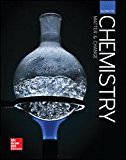
(a)
Interpretation:
The given problem needs to be solved in scientific notation and rounded off to the correct number of significant figure.
Concept introduction:
To multiply or divide numbers in scientific notation, multiply or divide the coefficients and then add or subtract the exponents, respectively.
Answer to Problem 126A
Explanation of Solution
Compute the following calculation.
(b)
Interpretation:
The given problem needs to be solved in scientific notation and rounded off to the correct number of significant figure.
Concept introduction:
To multiply or divide numbers in scientific notation, multiply or divide the coefficients and then add or subtract the exponents, respectively.
Answer to Problem 126A
Round off to the correct number is
Explanation of Solution
Compute the following calculation.
(c)
Interpretation:
The given problem needs to be solved in scientific notation and rounded off to the correct number of significant figure.
Concept introduction:
To add or subtract numbers in scientific notation, the numbers must have the same exponent.
Answer to Problem 126A
Round off to the correct number is
Explanation of Solution
Compute the following calculation.
Chapter 9 Solutions
Glencoe Chemistry: Matter and Change, Student Edition
Additional Science Textbook Solutions
Microbiology with Diseases by Body System (5th Edition)
Anatomy & Physiology (6th Edition)
Brock Biology of Microorganisms (15th Edition)
Introductory Chemistry (6th Edition)
Applications and Investigations in Earth Science (9th Edition)
Organic Chemistry (8th Edition)
- Using the appropriate bond energies, calculate the heat of reaction AH for the following reaction: H-H + CI-CI 2 H-CI You can find a table of bond energies by using the Data button on the ALEKS toolbar. Round your answer to the nearest kJ/mol. Note: For clarity, all lone pairs have been omitted from the molecular structures. ☐ kJ mol ค 000 Ar Barrow_forwardPredict the hydrocarbon, of formula C6H10, needed to prepare the following geminal dibromide upon treatment with excess hydrobromic acid. Note: The shown product is the only regioisomer formed in this reaction. HBr H₂C. CH3arrow_forwarddraw the major product formed with the listed reagentsarrow_forward
- Propose Williamson ether syntheses for the following compoundsarrow_forwardIdentify all functional groupsarrow_forwardA mixture of CaCO3 and MgC2O4 of unknown mass was heated in a 0.5 L closed rigid vessel to 900 degrees C.at 400C the following reaction occurs:MgC2O4 -> MgO (s) + CO (g) + CO2 (g)At 700C a second reaction occurs: CaCO3 -> CaO (s) + CO2 (g)The solid mass in the vessel was measured to be 3.06 g at 400C and 2.03g at 900CQuestion: What is the partial pressure of CO in both temperatures? (400 and 900C), provide detailed explanation.arrow_forward
- For the following alkyne, complete the reaction sequentially (that is draw the intermediate that we can’t stop at) and then name (complete name) all 3 molecules.arrow_forwardGiven the reaction sequence below, answer the following. A. Provide the structure for A. B. Provide the structure for B (pay attention to stereochemistry). C. Provide the structure for C. D. What are the stereochemical designations for I and II (R/S)?arrow_forwardWhich of the following is the most stable carbon radical?arrow_forward
- Put the following carbon radicals in order of increasing stability.arrow_forwardDraw the major organic product for each of the following reactions (pay attention to stereochemistry).arrow_forwardThere are 2 reactions (that you know of) to achieve the following transformation: One reaction is favored over the other because it avoids a competing reaction. A. Draw the favored reaction scheme (not the mechanism), be sure to include all necessary reagents. B. Draw the reaction scheme that is not favored and include all the possible products.arrow_forward
 ChemistryChemistryISBN:9781305957404Author:Steven S. Zumdahl, Susan A. Zumdahl, Donald J. DeCostePublisher:Cengage Learning
ChemistryChemistryISBN:9781305957404Author:Steven S. Zumdahl, Susan A. Zumdahl, Donald J. DeCostePublisher:Cengage Learning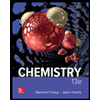 ChemistryChemistryISBN:9781259911156Author:Raymond Chang Dr., Jason Overby ProfessorPublisher:McGraw-Hill Education
ChemistryChemistryISBN:9781259911156Author:Raymond Chang Dr., Jason Overby ProfessorPublisher:McGraw-Hill Education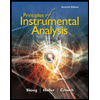 Principles of Instrumental AnalysisChemistryISBN:9781305577213Author:Douglas A. Skoog, F. James Holler, Stanley R. CrouchPublisher:Cengage Learning
Principles of Instrumental AnalysisChemistryISBN:9781305577213Author:Douglas A. Skoog, F. James Holler, Stanley R. CrouchPublisher:Cengage Learning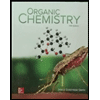 Organic ChemistryChemistryISBN:9780078021558Author:Janice Gorzynski Smith Dr.Publisher:McGraw-Hill Education
Organic ChemistryChemistryISBN:9780078021558Author:Janice Gorzynski Smith Dr.Publisher:McGraw-Hill Education Chemistry: Principles and ReactionsChemistryISBN:9781305079373Author:William L. Masterton, Cecile N. HurleyPublisher:Cengage Learning
Chemistry: Principles and ReactionsChemistryISBN:9781305079373Author:William L. Masterton, Cecile N. HurleyPublisher:Cengage Learning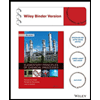 Elementary Principles of Chemical Processes, Bind...ChemistryISBN:9781118431221Author:Richard M. Felder, Ronald W. Rousseau, Lisa G. BullardPublisher:WILEY
Elementary Principles of Chemical Processes, Bind...ChemistryISBN:9781118431221Author:Richard M. Felder, Ronald W. Rousseau, Lisa G. BullardPublisher:WILEY





